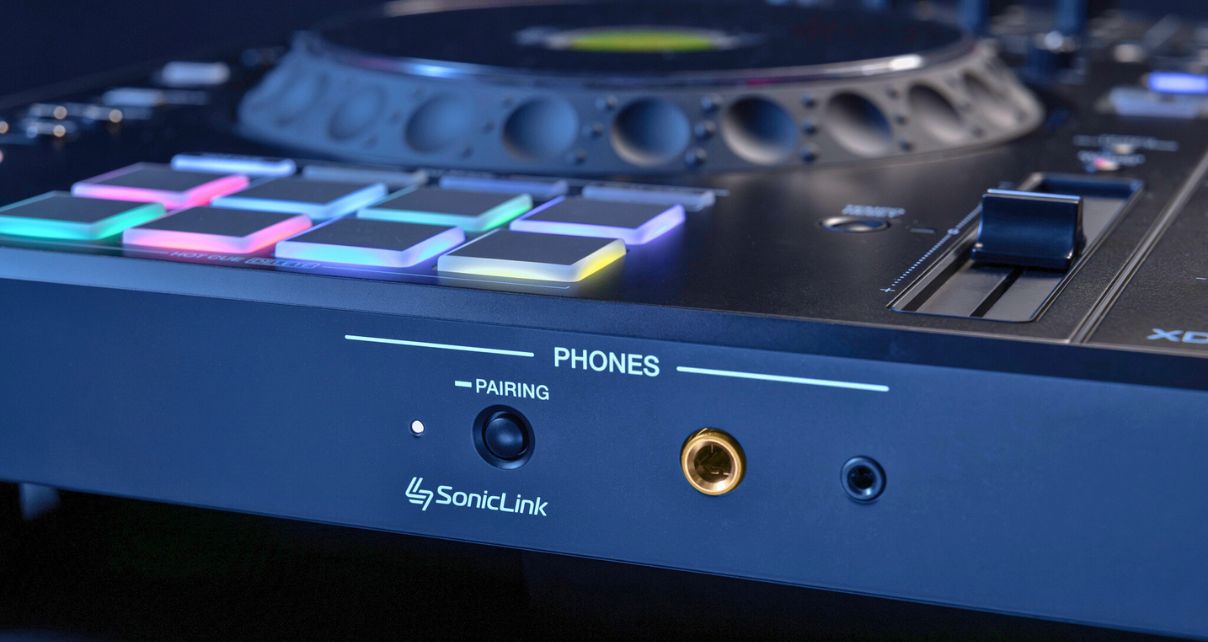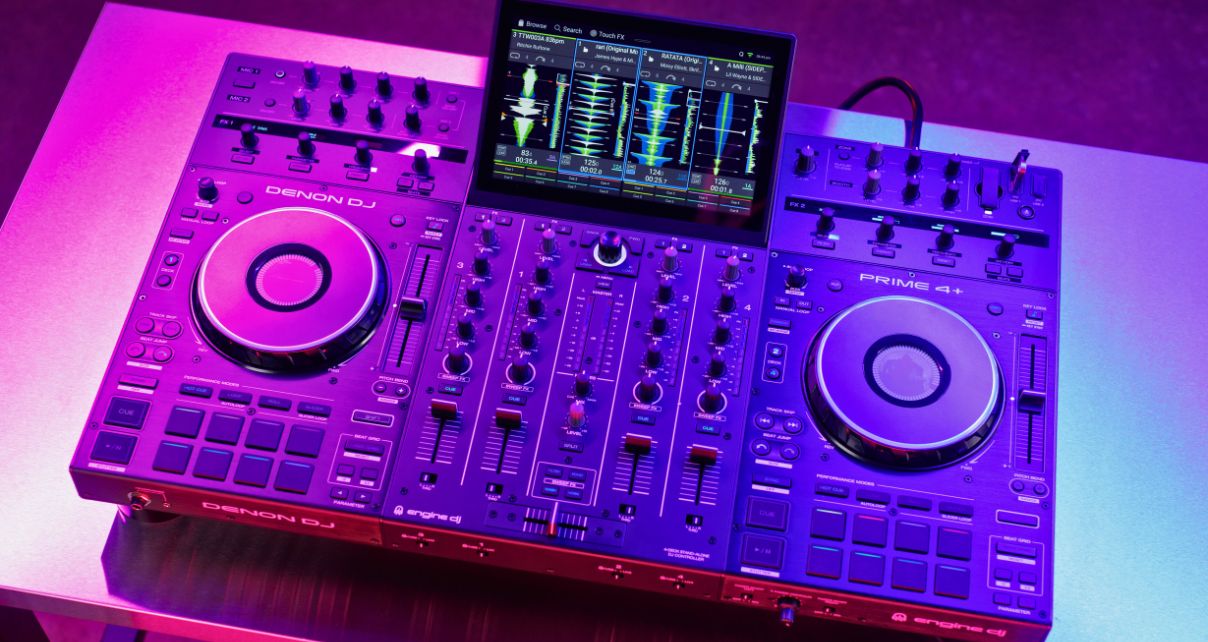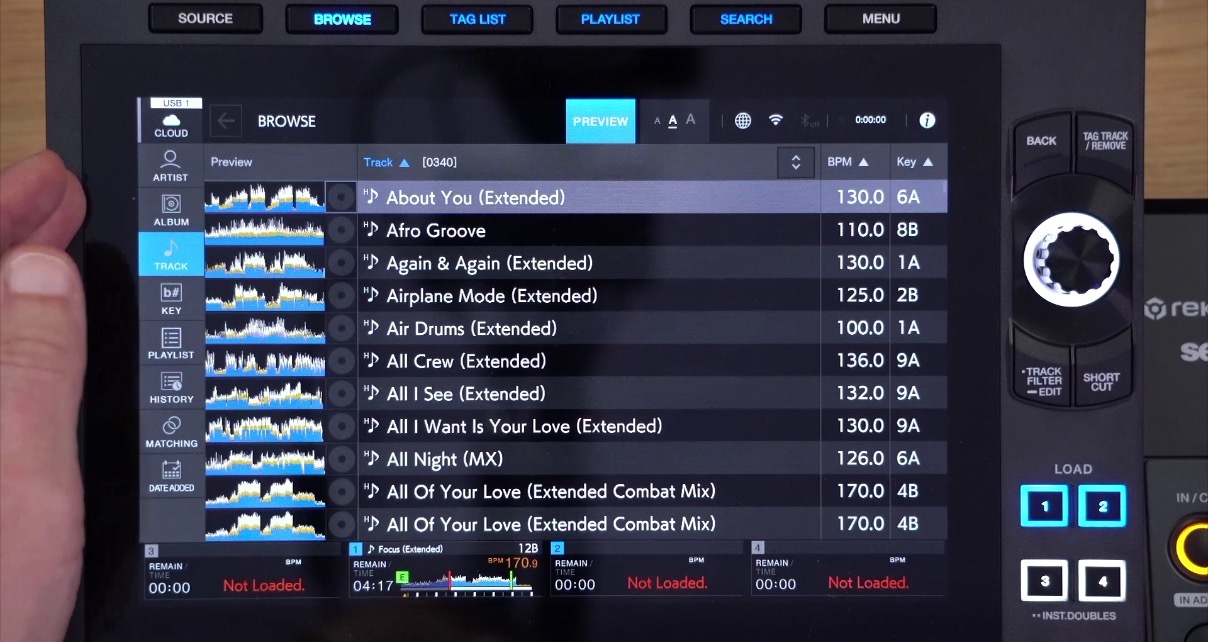In the world of standalone DJ systems, two units currently stand out as the cream of the crop: the brand-new AlphaTheta XDJ-AZ and the Denon DJ Prime 4+. As the flagship models from two of the biggest names in DJ equipment, these units naturally invite comparison, and so it has been no surprise that our students are currently asking for an XDJ-AZ vs Prime 4+ comparison often.
So with the Prime 4+ not having as much of the territory to itself any more, let’s dive into how they stack up against each other in terms of features, design, and functionality.
Watch the video
Prefer me to talk you through this? This comparison video pits the XDJ-AZ and Prime 4+ units head-to-head, covering everything that will help you choose the right set-up for your style of DJing.
Size and appearance

The XDJ-AZ is noticeably larger, being about 25% bigger than the Prime 4+ in all dimensions. Both units have a serious, business-like appearance with angular designs. However, the XDJ-AZ sports larger, CDJ-style jogwheels similar to those found on the CDJ-3000s, while the Prime 4+ features smaller jogwheels that some might find underwhelming given the unit’s size.
Screens and interface
Both units boast impressive screens with high functionality. The Prime 4+ edges out slightly with a smoother, snappier interface despite being the older model. It also features a pivoting screen, unlike the XDJ-AZ’s fixed-angle display.
Go here next: Free Denon DJ Prime 4 Training Tutorial & Video Manual
Inputs and outputs
The connectivity options are broadly similar, with both offering balanced XLR and unbalanced RCA master outputs, booth outputs, and microphone inputs.

The Prime 4+ includes additional USB sockets, which is how you connect deck controllers (probably you’d use the LC6000 from the same company), and it also has a zone output for an extra music zone. While the Prime 4+ has four analogue inputs for external sources, the XDJ-AZ only provides inputs for decks 3 and 4. It does, however, have Pro DJ Link to connect up, say, a pair of CDJ-3000s.

Software compatibility and streaming services
The XDJ-AZ works with both Serato and Rekordbox, while the Prime 4+ is only compatible with Serato when it comes to these two popular DJ software options. In terms of music streaming services, the Prime 4+ takes the lead with support for Beatport, Beatsource, SoundCloud, Tidal, and Amazon Music. The XDJ-AZ currently only supports Beatport, though more services are promised in the future.
Unique features

The Prime 4+ offers some standout features like lighting control for club or mobile set-ups and a drop sampler for easy DJ drops and idents. It also incorporates fuzzy keymixing, the advanced harmonic mixing technique that was invented by us here at Digital DJ Tips – a definite plus. The XDJ-AZ, on the other hand, introduces SonicLink technology for wireless headphone use and arguably superior effects that mirror those found on professional club gear.
Get your FREE Exclusive AlphaTheta XDJ-AZ Training Tutorial & Video Manual
Layout and usability

The XDJ-AZ closely mimics the layout of club-standard equipment, making it an excellent choice for DJs looking to transition seamlessly between this unit and professional club set-ups. The Prime 4+, while fully featured, deviates more from the standard club layout, which may require some adjustment for DJs used to traditional set-ups.
Music management and preparation
Both units offer cloud library integration, but the XDJ-AZ’s implementation through Rekordbox is more comprehensive and user-friendly.

The Prime 4+ does have an edge in terms of user login, offering a universal login system that’s more convenient than the XDJ-AZ’s USB-based approach.
Price and value
The Prime 4+ offers more bang for your buck, with a lower price point that could potentially allow for the purchase of, say, additional LC6000 decks within the same budget as the XDJ-AZ alone. However, for DJs prioritising club-standard layout and feel, the higher price of the XDJ-AZ may be justified.
Conclusion: XDJ-AZ vs Prime 4+
Choosing between these two powerhouse units ultimately comes down to personal preference and specific needs. The XDJ-AZ is the go-to for DJs wanting the closest experience to a professional club set-up in an all-in-one unit, especially those already using Rekordbox. The Prime 4+ offers more innovative features, better value for money, and a wider range of streaming services, making it attractive to tech-savvy DJs and those who prioritise flexibility.
DJ like a pro using ANY gear: The Complete DJ Course
Both units are highly capable and represent the pinnacle of current all-in-one DJ system technology. Your choice will likely depend on your software preferences, desired features, and whether you prioritise club-standard layout or cutting-edge innovations.




